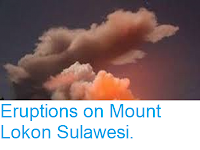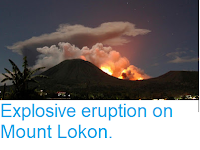832 people have now been confirmed dead and it is feared that the eventual total will reach into the thousands following an Earthquake on northern Sulawesi on Friday 28 September 2018, which triggered a tsunami. The event was recorded by the United States Geological Survey as a Magnitude 7.5 Earthquake at a depth of 10 km, roughly 78 km to north of the city of Palu, which occurred slightly after 6.00 pm local time (slightly after 10.00 am GMT), and was felt across the island of Sulawesi and on eastern parts of Borneo. The majority of the confirmed fatalities so far (821) have been in the city of Palu, but it is likely far more people have died in the Donggala Regency to the north of the city, where the Earthquake occurred and which was inundated by the tsunami after the event.
Debris in the streets of Palu, Sulawesi, following an Earthquake and tsunami on 28 September 2018. Haritsah Almudatsir/Jawa Pos.
The tectonic situation beneath Sulawesi is complex, as it is caught in
the collisional zone between the Eurasian, Pacific and Australian
Plates. The north of the island is located on a breakaway section of the
Eurasian Plate, called the Sangihe Plate. To the east lies the remnant
Molucca Sea Plate, which is being subducted beneath both the Sangihe
Plate and the more easterly Halmahera Plate, leading to Earthquakes and
volcanism on Sulawesi and the islands of the Sangihe Arc in the west and
the islands of the Halmahera Arc in the east.
The approximate location of the 28 September 2018 Sulawesi Earthquake. USGS.
Earthquakes
along subductive margins are particularly prone to causing tsunamis,
since these often occur when the overlying plate has stuck to the
underlying plate, being pulled out of shape by its movement.. Eventually
the pressure builds up to far and the overlying plate snaps back,
causing an Earthquake and a tsunami.
Witness
accounts of Earthquakes can help geologists to understand these events,
and the structures that cause them. The international non-profit
organisation Earthquake Report is interested in hearing from people who may have felt this event; if you felt this quake then you can report it to Earthquake Report here.
See also...
Follow Sciency Thoughts on Facebook.









